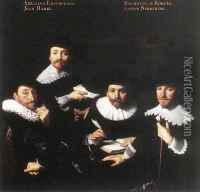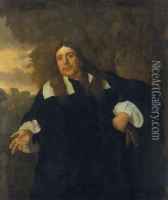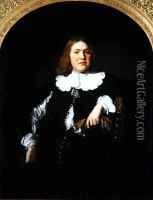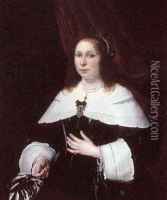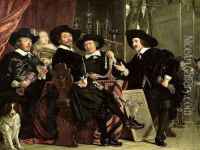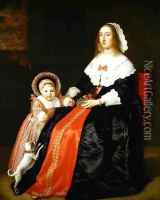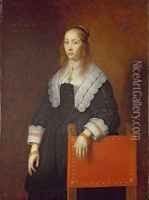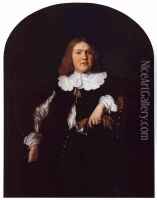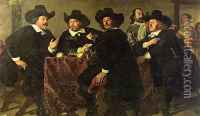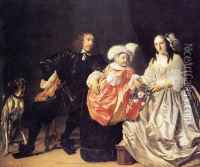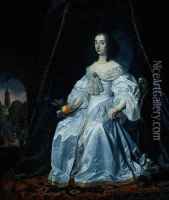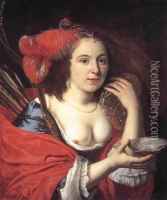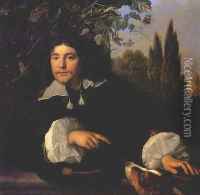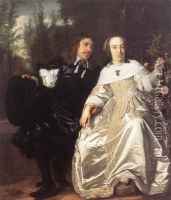Bartholomeus Van Der Helst Paintings
Bartholomeus Van Der Helst was a Dutch painter who became famous for his portraits during the 17th century, a time known as the Dutch Golden Age. Born in Haarlem, Netherlands, in 1613, he moved to Amsterdam, where he developed his career and reputation. His work was characterized by its careful attention to detail, use of light, and the ability to capture the opulence and confidence of the Dutch bourgeoisie and aristocracy of his time.
Van Der Helst's most famous work is 'The Banquet of the Amsterdam Civic Guard in Celebration of the Peace of Münster,' painted in 1648, which depicted the group of civic guardsmen in a detailed and grand manner. This piece, often considered his masterpiece, is celebrated for its fine detail, lighting, and composition.
Throughout his career, Van Der Helst was a contemporary of Rembrandt van Rijn. However, his style differed significantly from Rembrandt's more dramatic chiaroscuro and emotional depth. Van Der Helst favored a more realistic portrayal with smooth, polished effects, which made his portraits highly sought after by the wealthy citizens of Amsterdam. He became one of the leading portraitists in the city, his work reflecting the wealth and culture of Amsterdam's elite.
Although not as well known today as some of his contemporaries, Van Der Helst's works remain significant for their contribution to portrait painting. His ability to capture the likeness and personality of his subjects was highly acclaimed, and his portraits are still appreciated for their elegance and realism. He continued to paint until his death in Amsterdam in 1670. His legacy lives on through his influential portraits, which are displayed in museums across the world, including the Rijksmuseum in Amsterdam.
